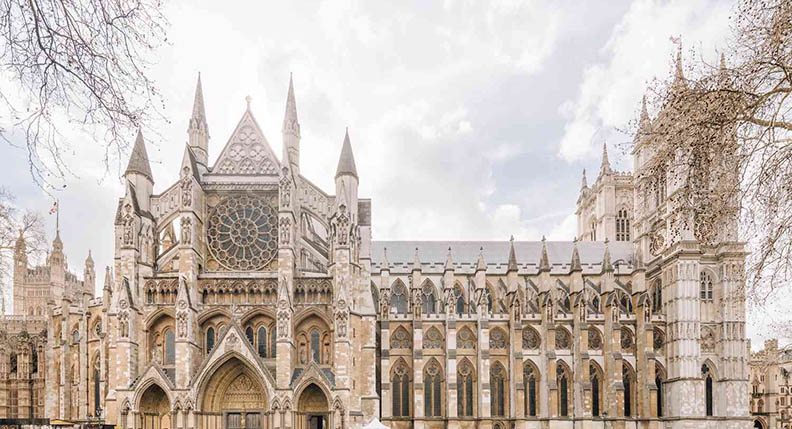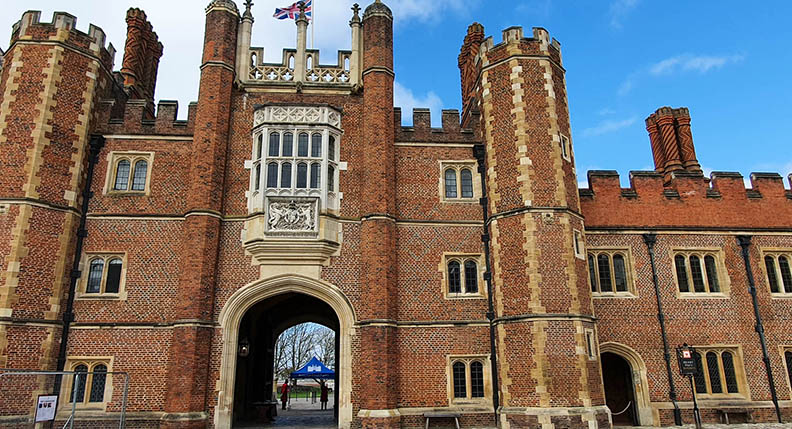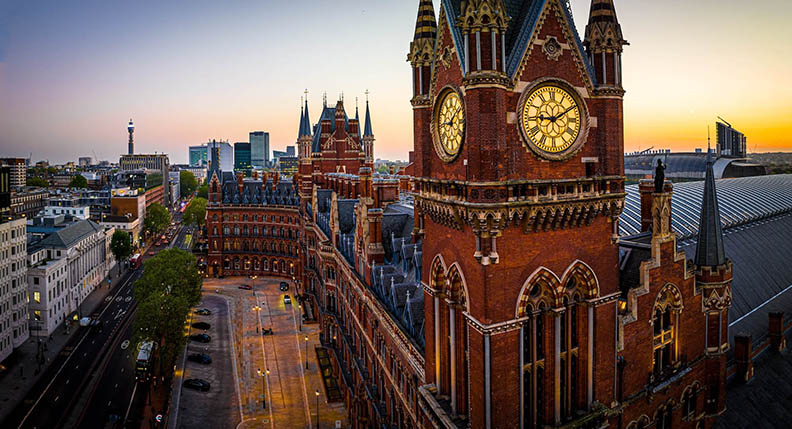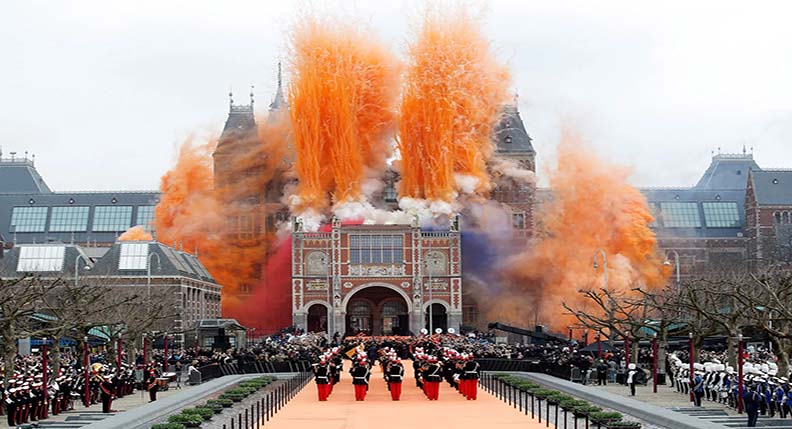London, a city pulsating with history and adorned with architectural masterpieces, serves as a living testament to the passage of time.
Tower of London: Fortress in Time
The Tower of London, an impressive structure nestled alongside the flowing banks of the River Thames, has stood witness to centuries of royal history, political intrigues, and even gruesome executions. Its roots dating back to the 11th century, this fortress remains an enduring symbol of authority.
Sauntering along the well-trodden cobbled paths, I found myself immersed in the palpable weight of history. The White Tower, a brilliant display of Norman craftsmanship, unraveled its mysteries through captivating exhibits. These showcases boasted medieval armor that sparkled with the echoes of chivalry, while regal jewels glittered in ornate chambers, each piece telling a story of opulence. Yet, the solemn presence of torture instruments reminded me of the darker episodes that once reverberated within these formidable walls.
Guided through the corridors by the echoes of the past, the guided tour served as a profound exploration of the lives of past monarchs. The narrative unfolded with striking clarity, offering insights into the intricate tapestry of power, ambition, and intrigue that defined England’s tumultuous history. Each step within the Tower became a deliberate journey through time, where the past seamlessly melded with the present, allowing me to grasp the profound impact of this grand structure on the destiny of a nation.
The White Tower, standing resilient with its sturdy stone walls, seemed to resonate with stories of conquests, betrayals, and regal splendor. The captivating exhibits not only showcased artifacts but breathed life into the very essence of the Tower, narrating tales of both magnificence and adversity. As I wandered through historic chambers, the ambiance echoed with the whispers of bygone monarchs, and the spirit of their reigns lingered in the air.
The Tower of London transcends its physicality, becoming a living testament that beckons visitors to step into the unfolding pages of history. It is more than a fortress; it is a repository of narratives, where every stone narrates a tale and every artifact preserves a fragment of a legacy that has endured through the ages.
Pros:
- Enriching historical exhibits.
- Panoramic views of the Thames.
- Engaging guided tours.
Cons:
- Crowded during peak hours.
Location:
Tower of London, London EC3N 4AB, United Kingdom.
How to Get There:
Reach Tower Hill station via the London Underground (Circle or District Line).
Booking Platform:
Seamless ticket acquisition through the official Tower of London website heightened the overall experience.
For history enthusiasts, the Tower of London is a non-negotiable pilgrimage. While the crowds can be overwhelming, the immersive experience and well-preserved artifacts make it an indispensable visit.
Westminster Abbey: Intersection of Royalty and Religion
Westminster Abbey, an iconic symbol of British monarchy, functions as both a coronation and burial site for monarchs. Its Gothic architecture and intricate details stand as a living testament to the intertwining of religion and royalty in British history.
Stepping into the abbey, the stunning stained glass windows and intricate stone carvings commanded attention. The audio guide proved invaluable, offering a wealth of information about coronations, weddings, and burials that have unfolded within these hallowed walls. The Poet’s Corner, a tribute to literary figures, added an extra layer of cultural richness to the experience.

Pros:
- Awe-inspiring architecture.
- Informative audio guide.
- Poet’s Corner is a literary gem.
Cons:
- Limited photography opportunities.
Location:
20 Deans Yd, Westminster, London SW1P 3PA, United Kingdom.
How to Get There:
Accessible via the London Underground (Circle, District, or Jubilee Line) at Westminster station.
Booking Platform:
Seamless ticket acquisition through the official Westminster Abbey website ensured a stress-free entry.
Westminster Abbey, a cultural marvel, exudes grandeur and history. The photography restrictions might disappoint some, but the visual feast compensates for any perceived limitations.
St. Paul’s Cathedral: Spiritual and Architectural Triumph
St. Paul’s Cathedral, an iconic silhouette in London’s skyline, stands as an architectural masterpiece by Sir Christopher Wren. The cathedral, a witness to royal weddings and state funerals, plays a pivotal role in British history.
Ascending the stairs to the Whispering Gallery, I was rewarded with panoramic views of the city. The cathedral’s interior, with its breathtaking dome and ornate decor, emanated a sense of tranquility. Attending a choral evensong transformed the visit into a spiritual experience, adding a unique dimension to my exploration.
Pros and Cons:
Pros:
- Striking architectural design.
- Spectacular views from the Whispering Gallery.
- Spiritual ambiance during choral events.
Cons:
- Entrance fee might be steep for some.
Location:
St. Paul’s Churchyard, London EC4M 8AD, United Kingdom.
How to Get There:
Accessible via the London Underground (Central Line) at St. Paul’s station.
Booking Platform:
Advance tickets purchased through the St. Paul’s Cathedral website facilitated a swift entry.
St. Paul’s Cathedral is a testament to human ingenuity and spiritual devotion. While the entrance fee might be on the higher side, the experience, especially during a choral event, is worth every penny.
British Museum: Timeless Treasures Across Continents
The British Museum, a repository of global history and culture, houses a vast collection of artifacts spanning centuries and continents. From the Rosetta Stone to the Elgin Marbles, this museum is a kaleidoscopic journey through time.
Wandering through the Egyptian mummies, Greek sculptures, and Asian art, I reveled in the diversity of human civilization. Thematic galleries like the Enlightenment Gallery and the Ancient Near East section provided a comprehensive understanding of world history.
Pros:
- Diverse and extensive collections.
- Free entry (donations encouraged).
- Educational and engaging exhibits.
Cons:
- Large crowds, especially on weekends.
Location:
Great Russell St, Bloomsbury, London WC1B 3DG, United Kingdom.
How to Get There:
Accessed via the London Underground (Central or Piccadilly Line) at Holborn station.
Booking Platform:
Entrance to the British Museum is free, and I chose to make a donation on-site to support this cultural institution.
The British Museum is a cultural treasure trove, and the sheer breadth of its collection is awe-inspiring. While the free entry is a boon, be prepared for crowds, particularly on weekends.
Hampton Court Palace: Tudor Grandeur on the Thames
Hampton Court Palace, a brief journey from central London, provides a glimpse into Tudor and Baroque architecture. Once a residence of King Henry VIII, the palace boasts stunning gardens, intricate Tudor kitchens, and the famous Hampton Court Maze.
Exploring the Tudor kitchens, I marveled at well-preserved artifacts and immersive displays. The beautifully landscaped gardens, including the Privy Garden and the Great Fountain Garden, offered a tranquil retreat. Interactive tours allowed me to step back in time and witness the opulence of Tudor court life.

Pros:
- Well-preserved Tudor and Baroque architecture.
- Beautiful gardens and outdoor spaces.
- Interactive and informative tours.
Cons:
- Requires a bit of travel from central London.
Location:
Hampton Court Way, East Molesey, KT8 9AU, United Kingdom.
How to Get There:
Take a train from London Waterloo to Hampton Court station.
Booking Platform:
Tickets secured through the Hampton Court Palace website ensured a seamless entry.
Hampton Court Palace is a hidden gem, offering a perfect blend of history and natural beauty. While it requires a short journey from central London, the experience is well worth the effort.
The Shard: Modern Icon in London’s Skyline
The Shard, standing as Western Europe’s tallest building, is a modern architectural marvel. With its sleek glass façade and unparalleled views of London, it provides a unique perspective on the city’s evolution into the 21st century.
Ascending to The Shard’s viewing platform, I was greeted by a 360-degree panorama of London. Interactive telescopes and informational panels facilitated identifying key landmarks, adding depth to the experience. The transition from day to night during sunset at The Shard was a breathtaking spectacle that etched itself into my memory.
Pros:
- Unmatched views of London.
- Interactive viewing experience.
- Memorable sunset vistas.
Cons:
- Relatively high ticket prices.
Location:
32 London Bridge St, London SE1 9SG, United Kingdom.
How to Get There:
Accessible via the London Underground (Jubilee or Northern Line) at London Bridge station.
Booking Platform:
Tickets booked through The Shard’s official website included access to both the indoor and outdoor viewing platforms.
The Shard offers a modern contrast to London’s historical landmarks. While ticket prices may seem high, the views and overall experience make it a worthy addition to any London itinerary, particularly for those captivated by contemporary architecture.
London’s architectural tapestry is a rich mosaic of history, culture, and innovation. From medieval fortresses and Gothic cathedrals to towering glass skyscrapers, the city’s skyline tells a story of evolution and resilience. My journey through these historical marvels not only deepened my appreciation for London’s rich heritage but also left me with a profound sense of connection to the past.
The seamless blend of the old and the new, the spiritual and the secular, and the opulent and the modern make London a unique destination for those seeking a multifaceted exploration of time and culture. As you traverse the city’s streets and visit these architectural wonders, you will find yourself immersed in a living museum that narrates the tale of a city that has gracefully embraced its past while confidently stepping into the future.



